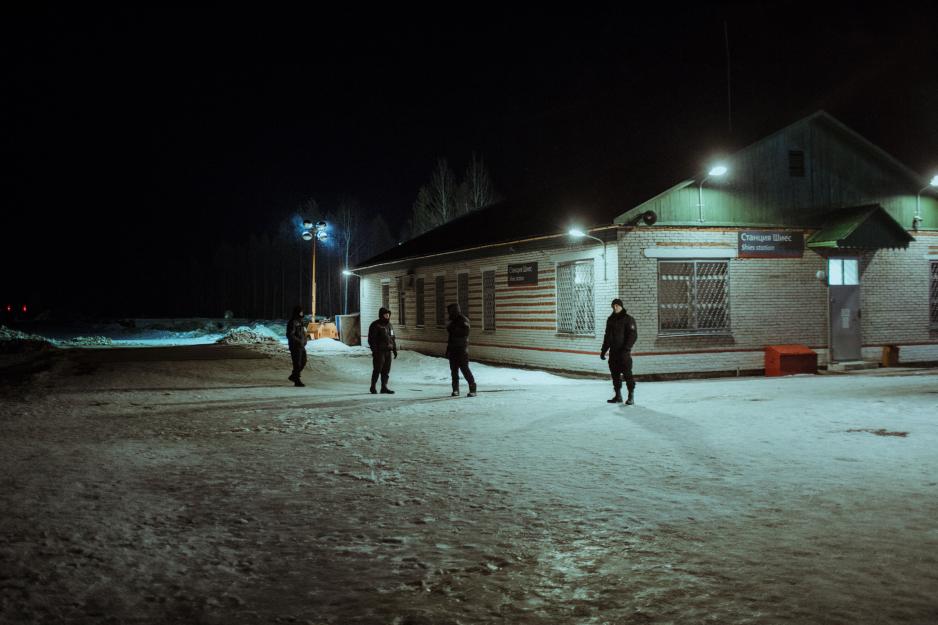Newsletter: High North in Minor and Major

A regional court in Arkhangelsk has ordered the company behind the construction of a waste landfill at Shies to remove illegally constructed buildings. Pictured here is the station building. Photo: Denis Sinjakov
Dear HNN reader!
This week, High North News has focused on the Norwegian High North. In conjunction with the Norwegian government’s upcoming whitepaper on the High North, representatives from the Foreign Ministry as well as the Ministry of Local Government and Modernisation, have visited Northern Norway to gather input about what the paper should contain.
The message from the North to the South was crystal clear: if the goal is to have people living in the High North, economic as well as other incentives should be put forward.
The Big Dilemma
However, we can’t escape the dilemma faced by governments in all the Arctic states: How to (and why?) invest in a region that people are moving away from?
Last Tuesday, Index Nordland was presented, an anual report on the status of economy, business, and population in one of Norway’s northernmost counties. The report gives cause for both worries and joys:
In 2019, Nordland exported record-high levels of both fish and humans.
The Norwegian “national dish” makes its way to China
There is in particular one industry that accounts for the biggest growth both when it comes to being profitable and creating value: the fisheries- and aquaculture industry.
One of the companies that has contributed to Nordland being Norway’s third biggest export-county is Vesteraalens AS, which just before Christmas sent the first two containers with fish balls from the small municipality of Sortland, Northern Norway to Shanghai, China.
The company believes this is the beginning of a new North Norwegian export adventure.
Smart cities in the Arctic
The last few years have seen a lot of research done on ‘smart cities’. There are currently three researchers affiliated with the Arctic Institute who have looked at the phenomenon in an Arctic setting – through comparing the cities of Bodø in Norway, Oulu in Finland, and Anchorage in Alaska.
It turned out that comparing the three cities posed its challenges, as they have fairly different strategic approaches to what it means to be a “smart” city.
While Oulu is described as “well-developed”, Bodø as “well-connected”, it was hard to find the word “smart” in the city development strategies of Anchorage.
Scientists do not exclude the possibility that having a good smart-city strategy may be a way to prevent - in particular young - people from moving away from the Arctic.
Seaweed trend
As many may know, the ocean provides many opportunities. Some of them are located near the shores and along the seabed.
Even though seaweed has not quite yet made it onto the average Scandinavian diet, at least when compared to the situation in many Asian countries, there is much that goes to indicate that this may be about to change.
Lofoten Seaweed Company has recently signed a contract and established a partnership with a major Norwegian potato chips company, which will launch a new potato chips variety offering a combination of sea salt and seaweed from the Lofoten Islands harvested by hand.
According to one researcher we have talked to, there might even be a seaweed-pizza in the grocery store shelves soon. (Norwegian only)
A half-victory to the garbage protesters
Those of you who are frequent readers of High North News will not have missed the garbage protests in Shies in Northwestern Russia. Since the summer of 2018, a growing number of Russians have protested against the building of a garbage landfill in pristine forest far into the marshlands of Northwestern Russia, on the border between Arkhangelsk and Komi counties.
Last week, a regional court in Arkhangelsk ordered the company behind the massive garbage development in Shies to remove buildings that illegally constructed. This is recognized as a partial victory for the environmentalists who have protested for one and a half year.
Monroe’s many headaches
In a news analysis last week, we concluded that the USA has reason to be worried about China in the Arctic, but perhaps not for the reasons they think.
This week, we are following up on how the territorial disputes with Russia also were among the foreign policy headaches for American president James Monroe, whom the Monroe Doctrine of 1823 is named after.
That was all for now. We wish you all a great weekend!
Siri Gulliksen Tømmerbakke
News Editor, High North News
